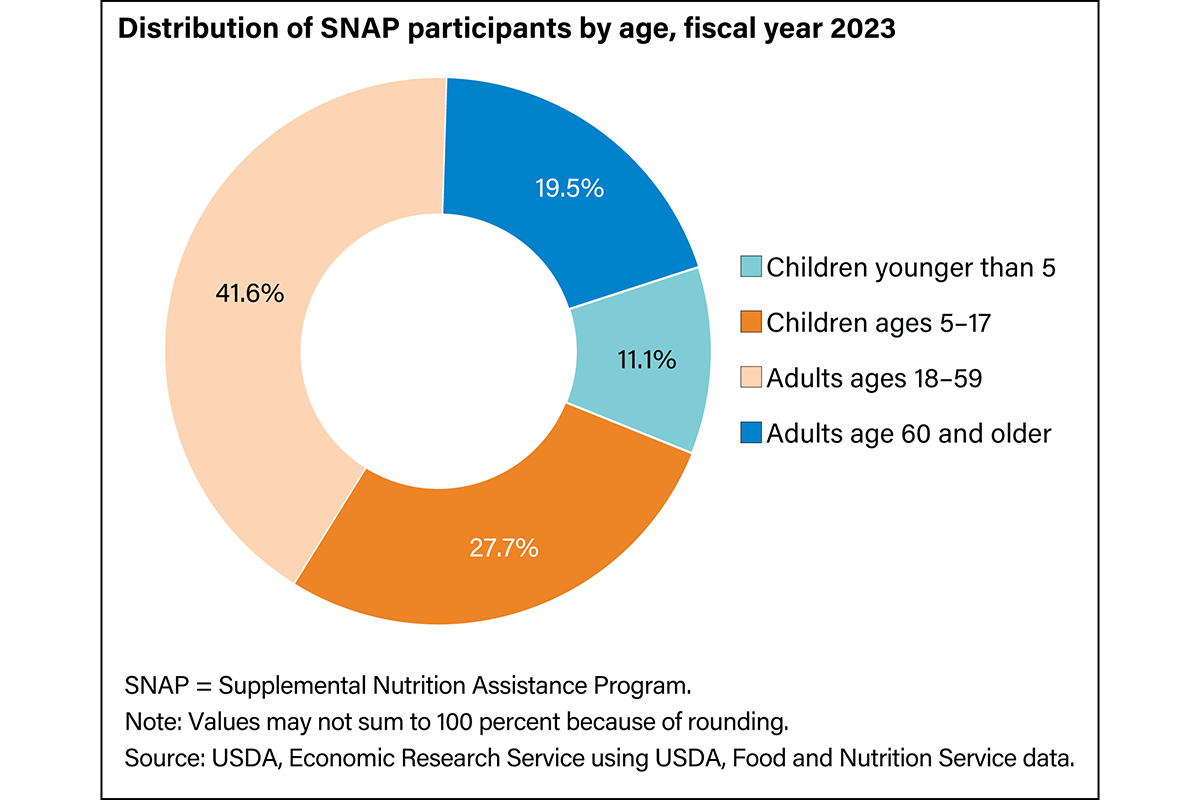Editor's note: On Oct. 27, the U.S. Department of Agriculture announced on its website that SNAP benefits will not be distributed on Nov. 1 due to the government shutdown.
As the federal government shutdown continues, leaders from Massachusetts and Oregon joined hunger relief advocates to warn that millions of Americans could lose access to food benefits in November.
On an Oct. 23 press call hosted by For the Long Term, the group urged immediate congressional action to restore Supplemental Nutrition Assistance Program (SNAP) funding before families face empty cupboards and food banks collapse under unprecedented demand.
Dave Wallack, executive director of For the Long Term, says with federal funding for SNAP running out, families and state economies are facing “crushing financial pressure.”
“The government shutdown threatens to cut off food assistance for 42 million Americans in November, pushing families already struggling with healthcare costs into crisis,” Wallack says.
States Push Back on Federal SNAP Freeze
Massachusetts Treasurer Deborah Goldberg warns that cutting off SNAP funding would devastate the state's most vulnerable residents, from children to seniors, while destabilizing local economies and worsening health outcomes. One in six Massachusetts residents relies on SNAP, she says, including one-third who are children.
Goldberg emphasized the $225 million in food aid expected to vanish in November, noting that the move marks a stark political shift compared to previous shutdowns.
“This irresponsible, aggressive attempt to shut down food assistance puts 42 million people at risk,” Goldberg says.
Goldberg mentioned a medical condition called failure to thrive, which becomes a developmental condition in children.
“It's all from lack of food in this country,” Goldberg says. “There should not be a food emergency, and certainly no one in government should be depriving people of an essential such as food. It's just going to cause a cascade of emergency after emergency and a spreading out of increased problems for people and, particularly, for states.”
“In Massachusetts, we are having to step in and bolster our economy in so many ways, the attack on our hospitals, our universities, our biotech and high-tech ecosystem, which is the driving force of our economy, and now these types of cuts are going to make it utterly impossible for us to fill the gaps that are so necessary,” she adds. “Food issues are health issues. We must all speak out, we must all act, and we must protect the programs that take care of basic necessities for the people within our states and our country.”
Elizabeth Steiner, Oregon's State Treasurer and a family physician, called the suspension of SNAP immoral and inexcusable.
One in six Oregonians relies on the program, she says, and in rural areas, that rate rises to one in four. SNAP benefits generate vital local commerce, with each dollar spent producing up to $1.80 in economic activity, Steiner says.
“More than 3,500 retailers statewide participate in SNAP, generating $1.50 to $1.80 in economic activity for every dollar spent in Oregon. One month of missed federal payments is approximately $140 million not feeding Oregonians and Oregon's economy,” Steiner says, adding that, “these cold-hearted decisions leave families hungry.”
Both treasurers warned the shutdown could signal more than a temporary lapse; it could be part of a longer effort to erode federal safety nets.

Food Banks Brace for a Surge
Catherine D'Amato, president and CEO of the Greater Boston Food Bank, says the shutdown will have immediate ripple effects. Even before the cutoff, she says, low-wage workers were already fearful of how they would feed their families. Her organization, part of the Feeding America network, partners with 600 food distribution centers and is already seeing emergency requests from federal workers during the government shutdown.
Losing SNAP, D'Amato says, would force food banks to supply 56 million additional meals in November alone — a nearly impossible task.
“Philanthropy is not going to solve this hunger problem, and SNAP is our nation's No. 1 defense against hunger,” D'Amato says. “It's a proven program, along with WIC, in making a difference in the ability for individuals and families to sustain themselves.”
Of the increased demand, D'Amato says: “There's no way that our charitable food network or the system in this country can provide that much food overnight or quickly. It's an impossible task. We are a very capable state, and we're very durable when it comes to feeding people here in Massachusetts, but we need our federal government to do its part and to make sure that SNAP benefits continue without any interruption, so that our neighbors don't suffer.”
United Way organizations across the country report similar spikes in need.
“We know from our work every day that communities struggled with food insecurity even before the government shutdown,” says Josh Dickson, senior vice president of public policy and advocacy for United Way Worldwide. “This moment exacerbates existing needs that we are working urgently to address. As we are in the fourth week of the shutdown, we are already seeing an increase in calls to the 211 network — the three-digit, free helpline that connects people to local health and human services — which is a clear sign that many individuals and families are struggling to make ends meet. When essential supports like SNAP face potential disruption, the ripple effects can be immediate and go beyond the short-term, impacting not just those who rely on this support but all communities nationwide.”
Barbara Bronstein, president and founder of Second Servings of Houston, says the organization is already seeing increased need.
“We are already seeing increased need, due to rising unemployment and furloughs, but we anticipate the potential lapse in SNAP benefits will cause a surge in demand. We are directing a larger proportion of our food supply to our PopUp Grocery Store program, which reaches low-income families, seniors, veterans and the disabled,” Bronstein says. “Onboarding new food donors quickly enough to address the pressing situation is our biggest challenge.”
“If SNAP benefits are discontinued, our 10 food banks will see an immediate surge in need,” says Kathleen Stress, interim executive director for Feeding New York State. “We're preparing by strengthening food supplies and partnerships, but the charitable network cannot replace the scale of SNAP. The loss of those benefits would put tremendous strain on food banks and leave many New Yorkers at risk of hunger.”

Retailer Response: Bracing for Ripple Effects in the Aisles
While public officials focus on hunger relief and state budgets, grocery retailers are also preparing for a significant economic hit if SNAP benefits are cut in November.
The National Grocers Association issued a statement from NGA President and CEO Greg Ferrara on the need to reopen the government and fund SNAP and WIC:
“With funding for access to healthy, nutritious food at risk of running out for the nearly 48 million combined Americans who depend on the Supplemental Nutrition Assistance Program (SNAP) and the Special Supplemental Nutrition Program for Women, Infants and Children (WIC), the National Grocers Association calls on leaders in Congress from both sides of the aisle to find a funding solution that reopens the government as quickly as possible.”
A powerful economic engine for communities big and small, SNAP supports over 388,000 American jobs, generating over $20 billion and $4.5 billion in wages and tax revenue, respectively, according to NGA.
“NGA urges Congress to act swiftly to ensure continuous funding for SNAP and WIC so that families can continue to put food on the table. Protecting these programs is an investment in the health, stability and well-being of Main Street communities across the country,” Ferrara says.
“We do not have the state resources to back fill these suspended federal payments,” Steiner says. “These beneficiaries will lose the fund to fill the shortfall in their monthly food banks. And as Ms. D'Amato said, our food banks cannot make up for this loss. Grocery stores that are already on thin margins may go out of business with this loss. We cannot back fill this.”
“This is an emergency,” Goldberg says. “We need to turn the SNAP tap back on.”
Key Notes:
- SNAP by the Numbers: 42 million Americans rely on SNAP; average household benefit: $313 per month.
- Economic Impact: Every $1 in SNAP benefits = up to $1.80 in local economic activity.
- What's at Stake: $225 million in Massachusetts and $140 million in Oregon could vanish in November alone.



















